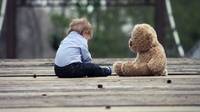
Attitudes toward Developmental Changes
Although changes of a physical or psychological nature are constantly taking place, many people are only vaguely aware of them unless they occur abruptly or markedly affect the pattern of their lives. The changes of old age, for example, usually occur at a much slower pace than those of childhood or adolescence. However, they still require readjustments on the part of all individuals. But, when individuals can make these adjustments relatively slowly, they themselves or others may not be conscious of them.
When changes are rapid, on the other hand, the individual is only too well aware of them, as are others. During the puberty growth spurt at the end of childhood and the beginning of adolescence, such comments as “My, how you have grown since I last saw you!” are evidence of how others notice these changes.
Likewise, in senescence, when the downward movement begins to accelerate, the elderly are aware of the fact that their health is “falling” and that their minds are “slipping.” Constant readjustment to these changes is necessary in the scheduled pattern of their lives. They must slow down as the incapacities and infirmities of old age catch up with them and they must frequently forgo some of the activities that formerly played important roles in their lives.
There is a tendency for most people to regard the past as better than the present. And even though most children look forward to the day when they will be “teenagers,” when that time comes they often long for the carefree days of their childhood. Similarly, many men who look forward to retirement wish, when the mandatory age for retirement arrives, that they could go back to earlier years when their usefulness and prestige were recognized by the social group.
When people become aware of the changes taking place in themselves, they develop definite attitudes toward these changes. Whether these attitudes will be favourable or unfavourable depends on a number of factors, the most important of which are described below:
Factors Influencing Attitudes Toward Developmental Changes
Appearance
Changes that improve one’s appearance are welcome and lead to favourable attitudes while those that detract from one’s appearance are resisted and every possible attempt is made to camouflage them.
Behavior
When behaviour changes are disconcerting, as during puberty and senescence, they affect attitudes toward the changes unfavourably. The reverse is true when changes are favourable, as occurs, for example, when the helplessness of babyhood gradually gives way to the independence of childhood.
Cultural Stereotypes
From mass media, people learn cultural stereotypes associated with different ages and they use these stereotypes to judge people of those ages.
Cultural Values
Every culture has certain values associated with different ages. Because maximum productivity is associated with young through early middle-age adulthood in the American culture of today, attitudes toward this age group are more favourable than attitudes toward other ages.
Role Changes
Attitudes toward people of different ages are greatly influenced by the roles they play. When people change their roles to less favourable ones, as in the case of retirement or widowhood, social attitudes toward them are less sympathetic.
Personal Experiences
Personal experiences have a profound effect on an individual’s attitude toward developmental changes. Since the authority and prestige of middle-aged executives decreases as they approach retirement, their attitudes toward aging are, for example, unfavourably affected. These attitudes are intensified by unfavourable social attitudes.


















